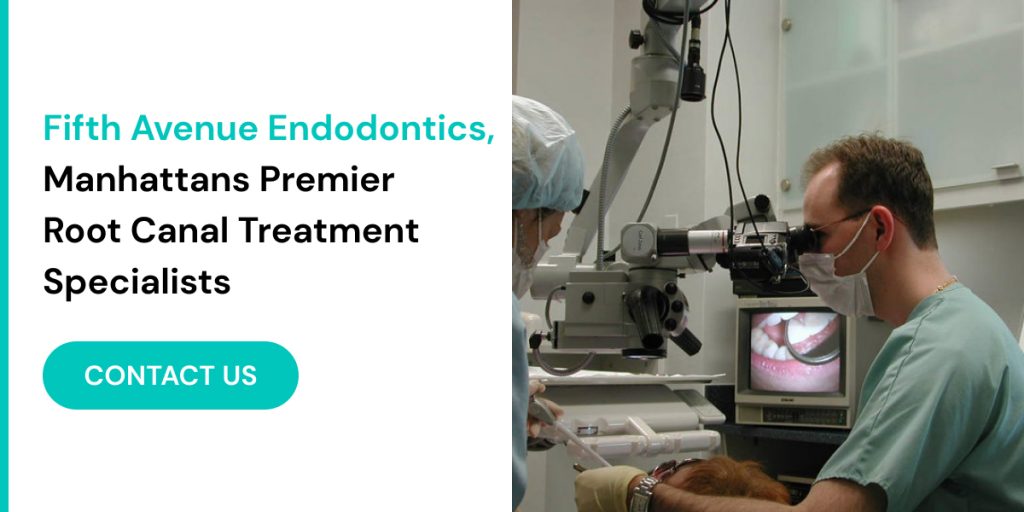When it comes to preserving the longevity of dental bridges, Manhattan Endodontics plays a crucial role in maintaining both their effectiveness and durability. Dental bridges are designed to replace missing teeth and restore your bite and smile, but their success heavily relies on the health of the supporting teeth. At Fifth Avenue Endodontics, Dr. Iofin and his team are experts in addressing the unique challenges associated with these restorations.
Endodontic therapy, often necessary when the supporting teeth face issues like infection or severe decay, is essential for the ongoing stability of your dental bridge. Dr. Iofin’s approach involves a thorough evaluation and precise treatment to ensure that any underlying problems are effectively managed. This not only helps in preserving the supporting teeth but also enhances the overall lifespan of your dental bridge.
By focusing on the health of the natural teeth, endodontic therapy provided by Manhattan Endodontics ensures that your bridge remains functional and comfortable. The detailed attention given to maintaining the integrity of the supporting structures directly contributes to the long-term success of your dental bridge, allowing you to enjoy its benefits for many years to come.
Understanding Dental Bridges and Their Importance
Dental bridges are a widely used restorative solution designed to replace one or more missing teeth. They consist of a series of artificial teeth, known as pontics, which are anchored in place by crowns that are fitted onto the adjacent natural teeth or dental implants. This structure not only fills the gap left by missing teeth but also plays a significant role in restoring the functionality of your bite. Proper bite function is crucial for efficient chewing, speaking, and maintaining the overall balance of your dental arch.
The presence of a dental bridge significantly impacts both aesthetics and oral health. A well-fitting bridge can enhance your smile, boost confidence, and improve your ability to chew food properly. Additionally, replacing missing teeth with a bridge helps to prevent the adjacent teeth from shifting out of alignment, which can lead to further dental issues.
However, the supporting teeth or implants of a dental bridge are not immune to problems over time. These supporting structures may develop issues such as deep decay, infections, or trauma, which can compromise the stability and functionality of the bridge. When these problems arise, they often require endodontic therapy—commonly known as root canal treatment.
Endodontic therapy focuses on addressing problems within the tooth’s pulp, which is the innermost part of the tooth containing nerves and blood vessels. By removing the infected or damaged pulp and cleaning the internal structures, endodontic therapy helps to preserve the health of the supporting teeth or implants. This is crucial for maintaining the integrity of the dental bridge. At Fifth Avenue Endodontics, Dr. Iofin and his team specialize in providing this essential care, ensuring that your dental bridge remains stable and functional for years to come.
The Role of Endodontic Therapy in Dental Bridge Maintenance
Endodontic therapy, commonly referred to as root canal treatment, plays a vital role in maintaining the stability and functionality of dental bridges. Dental bridges are designed to replace missing teeth and restore the appearance and functionality of your smile. They consist of artificial teeth supported by crowns on adjacent natural teeth or implants. While dental bridges are durable and effective, their success heavily relies on the health of the supporting teeth or implants. When these supporting structures experience issues such as infection or inflammation, endodontic therapy becomes essential.
1. Preserving the Supporting Teeth
The primary objective of endodontic therapy in the context of dental bridge maintenance is to save the supporting teeth. These supporting teeth are critical because they provide the foundation upon which the bridge is anchored. When a tooth supporting a bridge becomes infected, typically due to deep cavities, trauma, or other dental problems, it can jeopardize the entire structure. Endodontic therapy involves removing the infected or damaged pulp from within the tooth, thoroughly cleaning the internal structures, and sealing the tooth with a biocompatible material. This procedure helps to preserve the tooth’s structure and maintain its strength, ensuring that it continues to support the bridge effectively. In Manhattan Endodontics, this procedure is performed with precision to maximize the longevity of your dental bridge.
2. Preventing Further Complications
Untreated infections in the supporting teeth can lead to more severe complications, such as abscesses, bone loss, or even the loss of the supporting tooth. An abscess is a pus-filled pocket that forms at the root of an infected tooth, which can cause significant pain and swelling. If the infection spreads to the surrounding bone, it can lead to bone loss, weakening the support for the dental bridge and potentially compromising its fit and function. By addressing these issues early through endodontic therapy, Dr. Iofin and the team at Fifth Avenue Endodontics can prevent the infection from advancing and causing additional damage. Prompt treatment not only alleviates symptoms but also ensures that the dental bridge remains stable and effective.
3. Enhancing the Longevity of the Bridge
A dental bridge’s longevity depends largely on the health of its supporting structures. Endodontic therapy plays a crucial role in extending the lifespan of your dental bridge. By effectively treating any issues with the supporting teeth, endodontic therapy helps ensure that the bridge remains functional for an extended period. Properly treated teeth can continue to serve as reliable anchors for the bridge, reducing the need for future dental interventions and maintaining the bridge’s functionality. This not only saves you from potential additional procedures but also helps you enjoy the benefits of a well-maintained dental bridge. At Fifth Avenue Endodontics, Dr. Iofin’s expertise in endodontic therapy ensures that your dental bridge is well-supported and continues to function optimally.
Endodontic therapy is crucial for maintaining the health and stability of dental bridges. By preserving the supporting teeth, preventing further complications, and enhancing the longevity of the bridge, endodontic therapy ensures that your dental restoration remains effective and reliable. If you experience any issues with the supporting teeth of your dental bridge, seeking prompt care from a Manhattan Endodontics specialist like Dr. Iofin at Fifth Avenue Endodontics can help safeguard your investment in your smile and oral health.

Signs That You Might Need Endodontic Therapy
Recognizing the signs that indicate a need for endodontic therapy is crucial for maintaining the health and stability of your dental bridge. Endodontic therapy, also known as root canal treatment, is often necessary when the supporting teeth of a dental bridge experience issues such as infection or inflammation. Being vigilant about symptoms can help you address potential problems early and prevent more severe complications.
1. Persistent Tooth Pain: One of the most common signs that you might need endodontic therapy is persistent or severe tooth pain. This pain may be continuous or come and go, and it might be felt deep within the tooth. If the pain is significant and doesn’t subside with over-the-counter pain medications, it could indicate that the tooth’s pulp is infected or inflamed, requiring endodontic treatment.
2. Swelling Around the Gums: Swelling in the gums surrounding the supporting teeth of your dental bridge is another red flag. This swelling can be accompanied by tenderness or pain and may be a sign of an abscess or infection. An abscess is a pus-filled pocket that forms at the root of the infected tooth and can cause significant discomfort and swelling in the adjacent gum tissue. Prompt treatment is essential to address the infection and alleviate the swelling.
3. Sensitivity to Hot and Cold Temperatures: Increased sensitivity to hot or cold temperatures is another symptom that may suggest a need for endodontic therapy. This sensitivity can occur when the tooth’s pulp is damaged or inflamed, leading to discomfort when consuming hot or cold foods and beverages. If you notice that your teeth are more sensitive than usual, it may be a sign that the pulp is compromised.
4. Discoloration of the Tooth: In some cases, a tooth that is experiencing significant pulp damage or infection may become discolored. This discoloration can range from a dull gray to a more noticeable darkening of the tooth, which can indicate a problem with the tooth’s internal structures.
If you experience any of these symptoms, it’s essential to consult with a Manhattan Endodontics specialist like Dr. Iofin at Fifth Avenue Endodontics. Early assessment and treatment can help preserve the health of the supporting teeth, maintain the stability of your dental bridge, and prevent more severe complications from developing. Taking proactive steps to address these signs can ensure that your dental bridge remains effective and that your oral health is protected.
The Endodontic Therapy Procedure
The endodontic therapy process is a comprehensive treatment designed to save a tooth that has been severely compromised by infection or damage. This procedure, commonly known as a root canal, involves several precise steps to ensure the tooth is thoroughly treated and preserved. Here’s an overview of what you can expect during the endodontic therapy procedure at Fifth Avenue Endodontics under the expert care of Dr. Iofin.
1. Clinical Evaluation and X-rays
Before starting the endodontic therapy, Dr. Iofin will conduct a thorough clinical evaluation of the affected tooth. This includes reviewing your medical and dental history, discussing any symptoms you may be experiencing, and performing a physical examination. X-rays are taken to get a detailed view of the tooth’s internal structure and surrounding bone. These images help in diagnosing the extent of the infection or damage and in planning the precise course of treatment.
2. Local Anesthesia
To ensure that you are comfortable and pain-free during the procedure, local anesthesia is administered. This numbs the affected tooth and the surrounding area, allowing Dr. Iofin to work without causing you discomfort. The anesthesia also helps in reducing anxiety by ensuring that the procedure is as pain-free as possible.
3. Access Opening
Once the area is numbed, Dr. Iofin makes a small access opening in the crown of the tooth. This opening allows access to the pulp chamber, where the damaged or infected pulp is located. The access is created with precision to ensure that the tooth is properly accessed while minimizing any impact on the surrounding tooth structure.

4. Pulp Removal
The next step involves removing the infected or damaged pulp tissue from within the tooth. Dr. Iofin carefully cleans out the pulp chamber and the root canals, using specialized instruments. This process eliminates the source of infection or pain and prepares the tooth for the next stages of treatment.
5. Cleaning and Shaping
After the pulp is removed, the root canals are meticulously cleaned and shaped. This involves removing any remaining debris and bacteria from the canals and shaping them to prepare for the filling material. The cleaning and shaping process is crucial for ensuring that the canals are thoroughly disinfected and that the filling material can effectively seal the space.
6. Filling
Once the canals are clean and shaped, they are filled with a biocompatible material known as gutta-percha. This material seals the canals and prevents any future infections from occurring. The filling also provides structural support to the tooth, ensuring its stability.
7. Restoration
After the canals are filled, a temporary or permanent restoration is placed on the tooth. This restoration is designed to protect the tooth and restore its full function. In many cases, a crown may be placed on the tooth to provide additional protection and support, especially if the tooth was significantly weakened by the infection or damage.
8. Follow-Up Care
Following the procedure, it’s important to schedule a follow-up visit with your Manhattan Endodontics specialist, Dr. Iofin. This follow-up appointment allows Dr. Iofin to check the progress of the treated tooth, ensure that the restoration is functioning properly, and address any concerns you may have. Proper follow-up care is essential to confirm the success of the treatment and to maintain the health of your tooth and dental bridge.
In summary, the endodontic therapy procedure involves several critical steps to ensure the successful treatment of an infected or damaged tooth. By following these steps, Dr. Iofin and his team at Fifth Avenue Endodontics work to preserve your tooth, maintain the integrity of your dental bridge, and protect your overall oral health.
Aftercare and Maintenance
Proper aftercare following endodontic therapy is crucial for ensuring the success of the treatment and maintaining the longevity of your dental bridge. Endodontic therapy, commonly known as a root canal, involves intricate procedures to save a tooth from infection or damage. To support the healing process and ensure the continued effectiveness of your dental restoration, following Dr. Iofin’s aftercare instructions is essential. Here’s a detailed guide on how to take care of your tooth and dental bridge after the procedure:
- Maintaining Good Oral Hygiene
One of the most important aspects of aftercare is maintaining excellent oral hygiene. Regular brushing and flossing are essential to prevent further issues and promote overall oral health. Brush your teeth at least twice a day with fluoride toothpaste, making sure to clean all surfaces of your teeth, including the area around your dental bridge. Floss daily to remove food particles and plaque from between your teeth and along the gumline. Proper oral hygiene helps to prevent new infections, reduces plaque buildup, and keeps your dental bridge and the supporting teeth healthy.
- Regular Check-ups
Scheduled follow-up visits to your endodontist are vital for monitoring the progress of your treatment and ensuring the continued health of your tooth and dental bridge. During these check-ups, Dr. Iofin will evaluate the treated tooth, check for any signs of complications, and assess the condition of the dental bridge. Regular check-ups allow for early detection of any potential issues and provide an opportunity to address them promptly. These visits also help in ensuring that your dental bridge remains stable and functional, providing ongoing support for your oral health.
- Avoiding Hard Foods
Immediately following endodontic therapy, it’s advisable to avoid chewing on hard or sticky foods. Hard foods, such as nuts or hard candies, can exert excessive pressure on the treated tooth, potentially causing damage or dislodging the restoration. Sticky foods can adhere to the tooth and restoration, increasing the risk of damage or infection. Opt for softer foods that are less likely to impact the treated area until your endodontist confirms that the tooth has fully healed and the restoration is secure.
- Managing Discomfort
It’s normal to experience some discomfort or mild pain after endodontic therapy. This discomfort is usually temporary and should subside as the tooth heals. Over-the-counter pain relievers can help manage any discomfort. If you experience severe pain, swelling, or any other unusual symptoms, contact Dr. Iofin promptly for further evaluation.
- Avoiding Tobacco Products
If you use tobacco products, consider quitting or reducing your use, especially after endodontic therapy. Tobacco can impair the healing process and increase the risk of complications. Maintaining a tobacco-free lifestyle contributes to better oral health and enhances the success of your treatment.
- Following Dietary Recommendations
Dr. Iofin may provide specific dietary recommendations tailored to your individual needs following the procedure. Following these recommendations helps in preventing complications and supports the healing process.
Proper aftercare following endodontic therapy is essential for ensuring the success of the treatment and the longevity of your dental bridge. By maintaining good oral hygiene, attending regular check-ups, avoiding hard foods, managing discomfort, and following Dr. Iofin’s specific instructions, you can support the healing process and enjoy the full benefits of your dental restoration.

Conclusion
In conclusion, endodontic therapy plays a pivotal role in maintaining the health and functionality of dental bridges. This specialized treatment is crucial for addressing issues with the supporting teeth, ensuring that they remain strong and capable of supporting the dental bridge effectively. At Fifth Avenue Endodontic, Dr. Iofin and his skilled team in Manhattan Endodontics are committed to providing the highest level of care to ensure that your dental bridge remains a dependable and enduring part of your smile.
By addressing any problems with the supporting teeth through endodontic therapy, you not only safeguard the structural integrity of your dental bridge but also enhance its longevity and performance. This proactive approach helps you continue to enjoy the full benefits of a stable, functional, and aesthetically pleasing dental bridge.
If you have any concerns regarding your dental bridge or suspect that you might need endodontic therapy, do not hesitate to reach out to Dr. Iofin at Fifth Avenue Endodontic. Taking early and proactive steps can make a significant difference in maintaining a healthy and beautiful smile for years to come. Your oral health and the success of your dental restoration are our top priorities, and we are here to provide the expert care you need.

